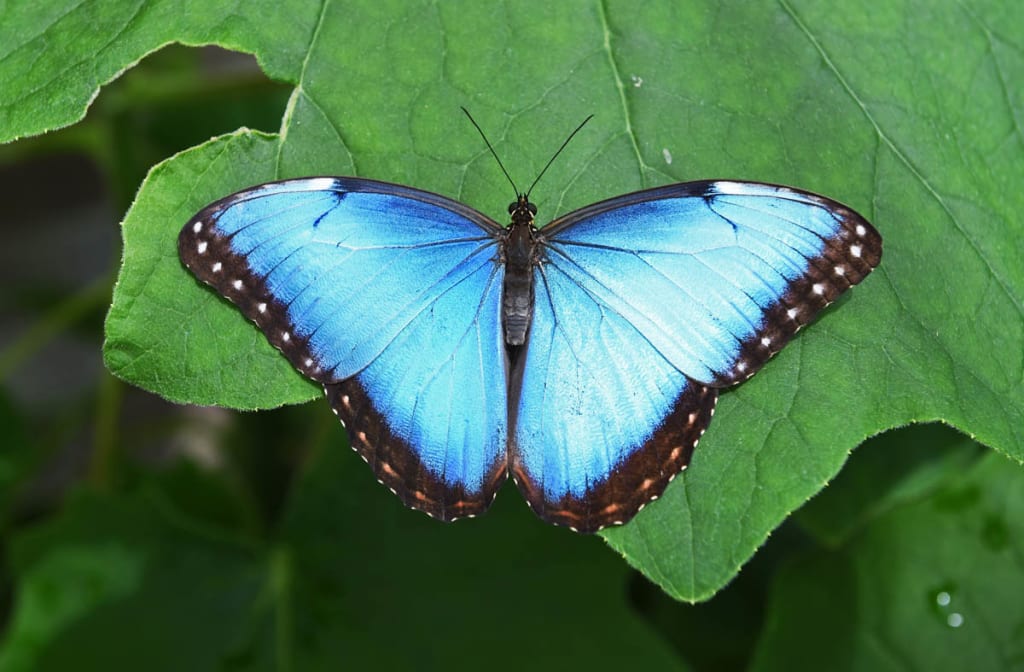The Butterfly Effect: The Importance of Conservation and Habitat Restoration
Conservation efforts are crucial to address these concerns. They involve a range of strategies, from legal protections and scientific research to public education and habitat restoration. These efforts aim to protect endangered species, preserve biodiversity, and promote a sustainable relationship between humans and the natural world.

Conservation is a term that resonates with the essence of safeguarding and nurturing the natural world. It encompasses the protection of everything from rare plants to beautiful butterflies, ensuring their survival and growth. This article delves into the significance of conservation, with a particular focus on one of nature's most enchanting creatures - butterflies. It explores how rebuilding their habitats and providing them with spaces to grow and develop can play a pivotal role in their conservation.
Butterflies, with their vibrant colors and delicate wings, are more than just a beautiful sight. They are vital pollinators and an important part of the food chain. Their presence or absence can serve as an indicator of the health of an ecosystem. However, like many other species, butterflies face numerous threats, including habitat loss, climate change, and pollution. These threats have led to a decline in butterfly populations in many parts of the world, raising concerns about their survival and the broader implications for biodiversity.
Conservation efforts are crucial to address these concerns. They involve a range of strategies, from legal protections and scientific research to public education and habitat restoration. These efforts aim to protect endangered species, preserve biodiversity, and promote a sustainable relationship between humans and the natural world.
Habitat restoration is one of the most effective conservation strategies, particularly for species like butterflies that are heavily dependent on their environment. Butterflies need specific plants to feed and reproduce. They lay their eggs on host plants, which provide food for the caterpillars once they hatch. They also need nectar plants for food once they become butterflies. Therefore, the loss of these plants due to factors like urban development, agriculture, and climate change can have a devastating impact on butterfly populations.
Restoring butterfly habitats involves replanting these essential plants and creating environments where butterflies can thrive. This could involve transforming a vacant lot into a butterfly garden, planting native plants along roadsides, or even creating butterfly-friendly spaces in our own backyards. These efforts not only benefit butterflies but also contribute to the overall health and diversity of our ecosystems.
However, habitat restoration is not just about planting the right plants. It's also about creating a balanced ecosystem that supports all stages of a butterfly's life cycle. This means ensuring the availability of host plants for caterpillars, nectar plants for adult butterflies, and safe spaces for butterflies to mate and lay their eggs. It also means considering other factors, like exposure to sunlight and protection from predators.
While habitat restoration is crucial, it's not the only solution. Conservation efforts also need to address the broader threats that butterflies face. This includes tackling climate change, reducing pollution, and promoting sustainable land use practices. It also involves research to understand the needs and behaviors of different butterfly species, monitoring populations to track changes and identify threats, and educating the public about the importance of butterflies and the steps they can take to help.
Moreover, conservation is not just the responsibility of scientists and policymakers. We all have a role to play. By learning about the importance of biodiversity, making sustainable choices, and taking action in our own communities, we can contribute to conservation efforts. Whether it's planting a butterfly garden, participating in a citizen science project, or advocating for policies that protect the environment, every action counts.
In conclusion, conservation is a vital endeavor in our quest to preserve the natural world and its incredible diversity. Butterflies, with their intricate life cycles and essential roles in our ecosystems, are a poignant reminder of the interconnectedness of life and the importance of eachspecies. Their conservation, through habitat restoration and other strategies, is not just about protecting these beautiful creatures. It's about safeguarding the health of our ecosystems, the balance of our food chains, and the richness of our biodiversity.
The plight of butterflies is a reflection of the broader challenges facing our planet. Habitat loss, climate change, and pollution are threats that affect not just butterflies, but countless other species and ecosystems. Addressing these threats requires a comprehensive, coordinated, and sustained effort. It requires the involvement of scientists, policymakers, and the public. And it requires a commitment to sustainability, to respecting and nurturing the natural world.
Butterflies, with their vibrant colors and delicate wings, are a testament to the beauty and complexity of life. They are a symbol of the fragility of our ecosystems and the urgency of conservation efforts. But they are also a symbol of hope. Their ability to transform, to adapt, and to flourish is a reminder of the resilience of nature and the potential for renewal.
As we look to the future, let's strive to create a world where butterflies and other species can thrive. A world where our actions are guided by respect for the natural world, a commitment to sustainability, and a recognition of our responsibility to future generations. A world where conservation is not just a strategy, but a way of life.
So, the next time you see a butterfly, take a moment to appreciate its beauty and its importance. Think about the journey it has taken, the challenges it has overcome, and the role it plays in our ecosystem. And think about the steps you can take to help conserve butterflies and the natural world they inhabit.
In the grand scheme of things, butterflies may seem small and insignificant. But in the words of the famous proverb, "Just when the caterpillar thought the world was over, it became a butterfly." This is a powerful reminder of the potential for transformation and renewal, both in nature and in our own lives. It's a reminder that each of us has a role to play in conservation, and that our actions, no matter how small, can make a difference.
About the Creator
John Wu
Tech lover, trying use AI do amazing things






Comments
There are no comments for this story
Be the first to respond and start the conversation.